What a difference a decade makes. Ten years ago, Europe’s business aviation industry was basking in one of the most prosperous periods in its history, with booming sales, a healthy order pipeline and high aircraft utilisation. These halcyon days ended abruptly with the onset of the global financial crisis, which left the sector reeling after one of its most painful and protracted downturns ever. Despite the many predictions of an imminent market rebound in Europe, nothing has materialised. But are things about to change?
There is a renewed sense of optimism in the sector today as consumer confidence rallies, albeit fairly slowly.
With an installed base of more than 3,000 jets and turboprops, Europe is the second-largest business aircraft market after North America, and a pivotal region for airframers, operators and other service providers.
Get all the coverage from EBACE on our dedicate landing page
CAUTIOUS OPTIMISM
"There is a sense of expectation within the market that I haven't felt for some time," says Brian Humphries, president of the European Business Aviation Association (EBAA). "Hopefully this will be the start of a turnaround."
Turbine aircraft deliveries into Europe have fluctuated over the past few years, with turboprops making the largest gains. Flight Fleets Analyzer records shipments of 127 business jets and 42 turboprops in 2016. This compares with 132 jets and 26 turboprops a year earlier, and 137 jets and 28 turboprops in 2014. "This is a far cry from the 2008 market peak," says Humphries, when a record 337 jet and 75 turboprops were delivered to Europe, "but the market is starting to stabilise."
His view is echoed by Tom Perry, Textron Aviation's vice-president of sales for Europe. "We had a very positive 2016 with deliveries of Cessna Citation jets and turboprops up 30% on the previous year," he says. The best-selling models for the year were the M2, XLS+ and King Air 250, although the Latitude – which entered service in Europe in February 2016 – also performed well.
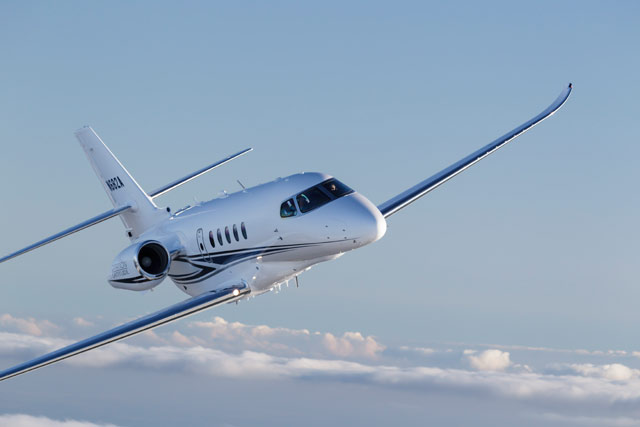
Textron Aviation/Cessna
Bombardier also reported a strong performance in Europe last year. Brad Nolen, vice-president of marketing with the Canadian airframer, says deliveries to European customers in 2016, as a percentage of worldwide shipments, were the best they have been in the past five years – with the flagship long-range Global 6000 its star performer.
"The European economy showed modest improvement in 2016 and we expect industry deliveries and orders in Europe to remain stable in 2017," Nolan says. "Along with North America and Latin America, we expect Europe to be one of the three main business aircraft markets that will generate the most deliveries over the next 10 years."
There are numerous headwinds to face in the short to medium term, however, which could affect European sales. These include the outcome of the elections in France and Germany in May and September, respectively; the impact of the UK’s exit from the European Union; the future direction of the Trump administration; and the uncertain political landscape in Russia.
"Investors naturally abhor uncertainty," says aerospace analyst Rolland Vincent. "Concerns over Brexit, the country elections, and the new US administration are as abundant as weeds in spring." That said, the overall mood of Europe-based owners and operators is "cautiously optimistic", Vincent suggests.
"Whether this optimism translates into additional flight utilisation and additional aircraft sales remains to be seen," he says. "The worldwide market for business aircraft has been oversupplied for some time, and this is not a hangover that will go away with a hot cup of coffee and a slice of dry toast."
The historically large inventory of used aircraft has affected sales of new aircraft throughout the region, with many airframers forced to discount new aircraft to shift inventory and maintain market share. This process, Vincent says, is not sustainable.
"Nobody wants to cede market share – or by association and even worse, customers – to the competition," he says. "At some point, even the more prudent and disciplined are going to have to react to persistent discount pricing by another manufacturer. In what is a fairly small marketplace, the actions of one or more of the various major players simply becomes too big to ignore. As an industry, we have slipped onto a slippery slope of discounting, and customers have been conditioned to expect concessions – even after the deal is apparently closed."
DISCOUNTING PRICES
Vincent's views are echoed by Daniel Hall, senior valuations analyst with Flight Ascend Consultancy. He says the rampant discounting last year produced some of the worst market value declines the industry has ever seen – particularly at the top end of the market. But airframers have begun to fight back, Hall asserts, by walking away from buyers who are demanding huge discounts and lowering production to fit demand. “It is welcome to see,” he says.
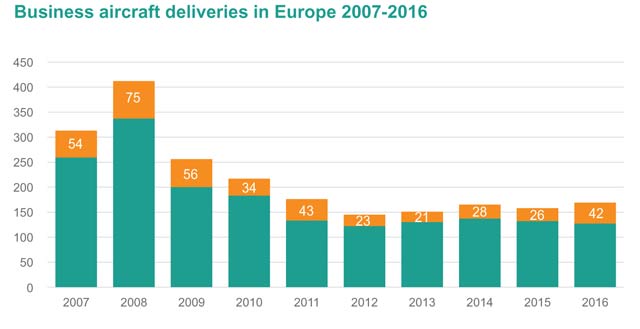
Scott Donnelly, chief executive of Textron, the parent company of Textron Aviation, admitted during the company’s first-quarter earnings call in April that its sales teams are leaving the negotiating table rather than discounting heavily. This strategy resulted in a sharp fall in first-quarter deliveries of its King Air twin-engined turboprop family, but the airframer is confident that buyers will return by the end of year.
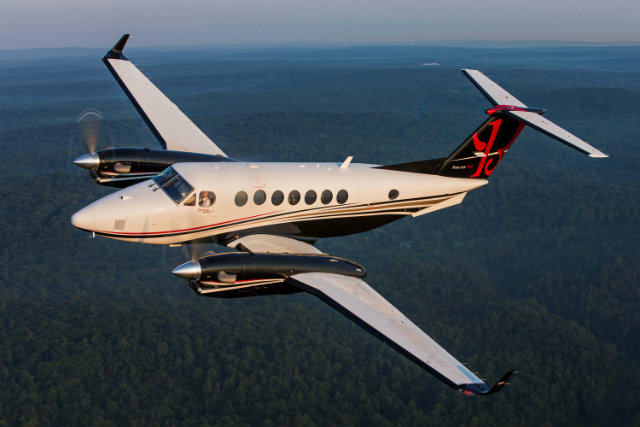
It would seem that this firm stance is starting to produce results, with signs that pricing of pre-owned aircraft – particularly at the lighter end of the market, is starting to firm up. "This is an encouraging sign of a return to health," Vincent says. "Business turboprops in particular are a bit of a darling segment right now, with demonstrated strength in residual values and relatively low availability on the pre-owned market."
This niche sector received an added boost in March following the European Aviation Safety Agency's decision to approve single-engine turbine aircraft for commercial operations in instrument meteorological conditions (CAP SE-IMC). "This landmark decision means that aircraft like the Pilatus PC-12 and Daher TBM 930 can now be operated commercially at night, and under instrument flight rules, across all 32 EASA member states," says EBAA's Humphries. "Having a lower-cost option is likely to attract new people to the market," he adds.
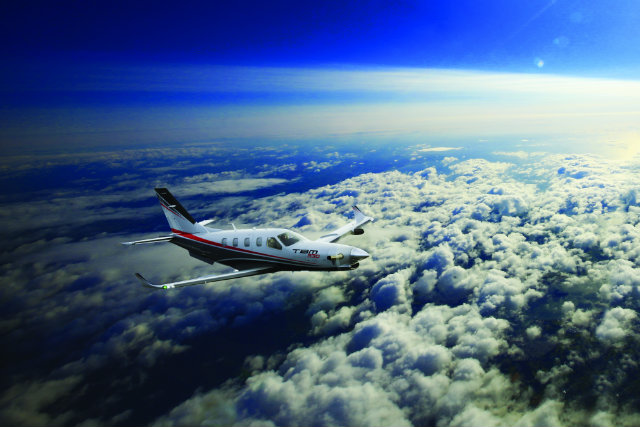
Daher
CHARTER REBOUND
The introduction of these niches types into the commercial arena should also help to boost the choice of aircraft for Europe's business aircraft flyers and operators. Aerospace analyst Brian Foley says the charter market has been "stuck in neutral for a decade".
"It has been punctuated at times with brief jumps in aircraft utilisation, only to be quashed the next month," he says. "Market participants in the region seem to be resigned to the perception that this is as good as it gets for the foreseeable future."
The tide has started to turn, however. German data services and analysis company WingX Advance reveals a 5% increase in business aircraft departures at Europe’s airports for the first quarter of 2017, to more than 170,000.
This compares with 163,400 between January and March 2016 and 164,800 during the same period in 2015. WingX managing director Richard Koe says: "Q1 has seen strong growth trends in business aviation activity in Europe, especially in business jet flights, with March marking the first continuous month of growth." While he cautions that activity is still well below the record 195,400 aircraft departures recorded in Q1 2008, Koe is confident the trend bodes well for a more active market in 2017. "This will be the first real growth in several years," he suggests.
The Citation Excel/XLS and PC-12 were the most popular types, with other light aircraft, such as the Embraer Phenom 300 and Mustang, recording the strongest year-on-year growth, says Koe.
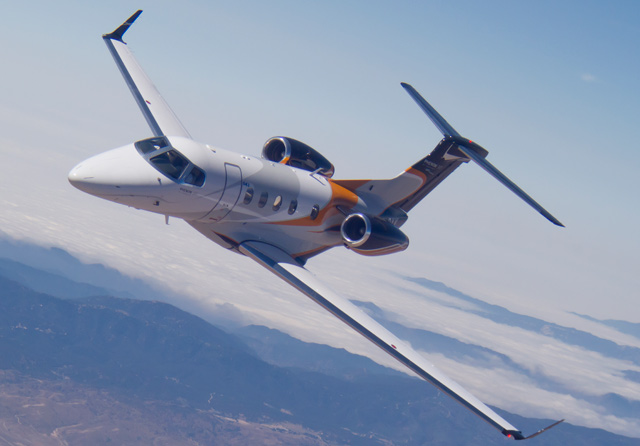
Embraer
Large jet activity also grew in the period, especially in the ultra-long range segment, WingX shows, while the light and midsize active fleets declined on a year-on-year basis.
While WingX singles out France, Germany and the UK as the most popular destinations, it also points to a recovery in Russia and Turkey, which have been lagging behind other countries for some time due to economic and political instability in both nations.
Charter flights are almost single-handedly responsible for the rise in activity, while the performance of the owner-flyer niche remained flat.
"Only AOC [charter] activity is growing," Koe says. "It's too early to say, but we may be seeing a sustained shift in business jet travellers' preferences, from ownership to charter."
OPERATOR LAUNCHES
The surge in business aircraft utilisation in Europe is spawning a new wave of operators hoping to lure travellers with their innovative ventures. After several years of exploring the European market, US fractional ownership company Flexjet made its move in March with the launch of a charter-only service. The company's European operation took delivery of its third Nextant 400XTi in April and says it has been overwhelmed by the reception. "It's been unbelievable," says Ray Jones, chief executive of London-headquartered Flexjet Ltd. "We have flown 50% more hours on the aircraft than we expected."
The new service is aimed at Flexjet's North American customers wishing to travel within Europe, the Middle East and Africa. The fleet is also available for ad hoc charter through what Flexjet describes as its "select European charter broker partners".
Flexjet is one of a handful of established US operators that are set to take off in Europe this year. Members-only charter company Wheels Up has set its sights on a 2017 launch. Although it remains tight-lipped on its plans, the company – which operates a growing fleet of Beechcraft King Air 350i turboprops in the USA for its 3,000-plus members – has hinted that UK business aviation services provider Gama Aviation will operate the 350is in Europe, in an extension of the partnership already in place between Wheels Up and Gama’s US subsidiary Gama Charters.
Fellow US members-only operator Surf Air is not reticent about its plans for Europe. The company is poised to launch in June, taking on the continent's traditional airlines and on-demand charter providers with its low-cost, all-you-can-fly, subscription-based model.
London Luton to Cannes and Ibiza will be the inaugural services, with flights departing and arriving at the airports' VIP terminals. The network will be expanded within months to include London to Milan and Zurich, and Zurich to Luxembourg and Munich.
The operator will launch European services with a Phenom 300, and will add Pilatus PC-12NGs to the fleet from September. Surf Air Europe chief executive Simon Talling-Smith says the service is designed to bring "very large numbers of people into the private aviation space" who have never used business aircraft before.
He hopes to emulate the success of the company's US parent, which has seen its membership climb to more than 3,000 since its launch in 2014. "Around 80% of these members are new to private aviation," Talling-Smith says.
The Santa Monica-based operator performs about 90 daily flights with its fleet of 12 PC-12NGs. It has further 45 of the eight-seat singles on order.

Surf Air
"We will use a mixture of PC-12s and light jets in Europe," Talling-Smith confirms. He says a "large light-jet order" will be placed before the end of the year, but will not disclose his choice of aircraft type.
German start-up JetEight is also planning to take on Europe's airlines this year with its version of the all-you-can-fly model. This offering, with a fixed monthly fee, will be targeted at travellers in Germany and Switzerland initially, using light jets and turboprops chartered through local operators.
JetEight founder Ruben Portz says European airlines have not treated their business-class passengers well.
“While trying to compete with low-cost carriers, they have forgotten what short-haul business class stands for,” he says. “These premium travellers like to travel quickly from A to B, but they end up in dreadful security checks, slow boarding procedures and waiting for transfer passengers.”
These unavoidable frustrations with airline travel have led to the formation of transatlantic start-up Bliss Jet. The US company is preparing to offer a scheduled service in the second half of the year between New York and London using Gulfstream G450 and G550 business jets. The service – which will connect New York LaGuardia with London Stansted – is targeted at business and first-class airline passengers who are looking for a convenient and upmarket alternative to the transatlantic carriers.
Bliss Jet is the brainchild of David Rimmer, who launched the venture following decades of experience in transatlantic travel. "I have been flying between New York and London for 35 years in airline business and first class," says Rimmer, who is also Bliss Jet's president and chief executive. "I have also worked in the business aircraft industry for many years, and now have the opportunity to offer travellers something far better than the airlines can deliver."
Bliss Jet will offer 10-seat G450 and G550 large-cabin, long-range business jets – operated by US charter company White Cloud – between Sheltair Aviation's fixed-base operation at LaGuardia to Inflight Jet Centre's VIP terminal at Stansted.
"Not since the days of the Concorde has a door-to-door journey between New York and London been this fast or this refined," claims Rimmer.
VALUE PROPOSITION
Ascend's Hall is encouraged by the wave of new operators, particularly the membership-based programmes. "These ventures should help the industry to grow by lowering entry barrier to first-level users of private aviation," he says.
Vincent agrees: "If there is one thing that seems to bind them all together, it is the search for the Holy Grail of lower prices to engage a broader audience of customers in business aviation."
The operator market may be crowded, he argues, but Europe is one of the wealthiest markets in the world, and is only beginning to embrace business aviation.
"In many ways, Europe has proven to be a fertile garden for aviation innovation, especially as regards ultra-low-cost air carriers," Vincent says. "While this is in many ways the opposite end of the air transport spectrum, the notion of making productive use of aviation-related assets – airplanes, equipment, facilities, people – is not far different in the airliner and business jet worlds."
There will be some cannibalisation at the margins, whereby someone who may have selected a traditional charter provider opts for one of the new entrants, he concedes. “Customers have a way of self-selecting providers that best suit their needs and budgets, and this process effectively stratifies the market into additional layers of service quality and price/value.”
AIRPORT ACCESS
Ensuring access to key airports such as Geneva, Switzerland, Paris Charles de Gaulle, Frankfurt Main and London area hubs such as Heathrow, Gatwick and Luton are the key to maintaining business aviation’s value equation, Vincent argues, a view echoed by EBAA's Humphries. "When it comes to slot allocation at Europe's leading international airports, business aircraft are a long way down the list," he says. Unlike European airlines, business aircraft operators do not get "grandfather rights" at the region’s airports, no matter how long they have been based there. He says: "Business aircraft account for nearly a quarter of the movements at Luton [about 30,000 in 2016] but operators are well aware that they could lose their rights to access the airport if commercial airline number increase. There is nothing they can do."
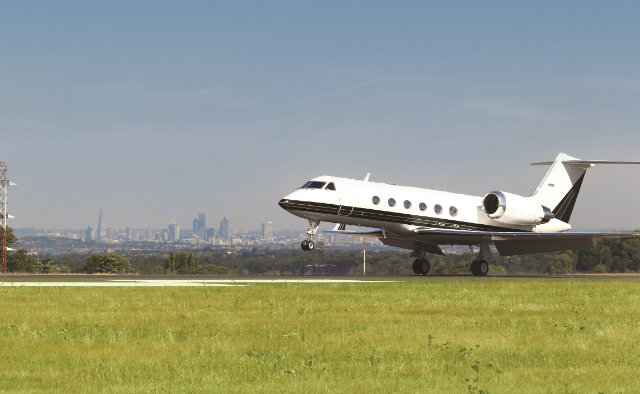
Biggin Hill Airport
While business aviation is well served in London and the surrounding areas, with good secondary airports such as Biggin Hill and TAG Farnborough, its acceptance at the major hubs, such as Heathrow and Gatwick, is waning. "We just get the scraps," says Humphries. "While airport provision in London is fantastic, business aircraft passengers still want to fly into the major hubs when they are interlining with a carrier."
EBAA has sought to redress the balance. In 2011 the association – co-host of the annual European Business Aviation Convention and Exhibition which will be held from 22 to 24 May in Geneva – challenged the European Commission-led recast of the 1993 slot allocation regulations. In its position paper, the EBAA describes the proposals as "not fit for purpose". It says more than 90 airports in the European Union are slot co-ordinated, including six of the top 10 facilities regularly used by business aircraft.
"This is having a huge impact on the way business aviation can access these airports," EBAA says. "On a few occasions, it has led to dramatic losses of what really are grandfather rights to the point that access to self-funded facilities, including aprons and hangars, is no longer possible."
Its proposals, along with the EC recast and other EU aviation initiatives, have since been blocked by an obscure political dispute between the UK and Spain over the sovereignty of Gibraltar airport. "We are hoping it will finally get a hearing during Brexit negotiations," says Humphries. "In the meantime, we will carry on playing second fiddle to the commercial airlines."
Get all the coverage from EBACE on our dedicate landing page
CAUTIOUS OPTIMISM
Source: Flight International



















